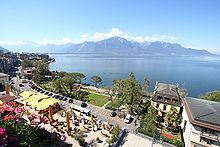
Yes are an English progressive rock band formed in London in 1968 by lead singer Jon Anderson, bassist Chris Squire, guitarist Peter Banks, keyboardist Tony Kaye, and drummer Bill Bruford. The band has undergone numerous lineup changes throughout their history, during which 20 musicians have been full-time members. Since February 2023, the band has consisted of guitarist Steve Howe, keyboardist Geoff Downes, bassist Billy Sherwood, singer Jon Davison, and drummer Jay Schellen. Yes have explored several musical styles over the years and are most notably regarded as progressive rock pioneers.
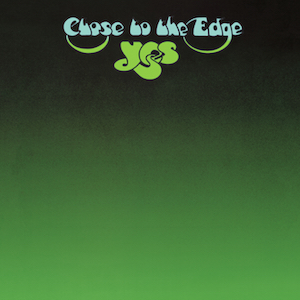
Close to the Edge is the fifth studio album by English progressive rock band Yes, released on 8 September 1972, by Atlantic Records. It is their last album of the 1970s to feature original drummer Bill Bruford, who found the album particularly laborious to make and felt unable to contribute better ideas, which influenced his decision to join King Crimson once recording had finished.

Tales from Topographic Oceans is the sixth studio album by English progressive rock band Yes, released on 7 December 1973 by Atlantic Records. It is their first studio album to feature drummer Alan White, who had replaced Bill Bruford the previous year. Frontman Jon Anderson devised its concept during the Close to the Edge Tour, when he read a footnote in Autobiography of a Yogi by Paramahansa Yogananda that describes four bodies of Hindu texts about a specific field of knowledge, collectively named shastras–śruti, smriti, puranas, and tantras. After pitching the idea to guitarist Steve Howe, the pair spent the rest of the tour developing an outline of the album's musical themes and lyrics.
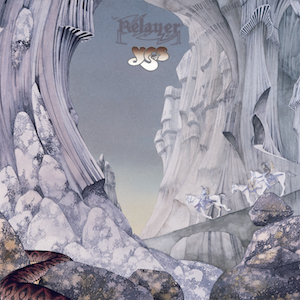
Relayer is the seventh studio album by the English progressive rock band Yes, released in November 1974 by Atlantic Records. After keyboardist Rick Wakeman left the group in May 1974 over disagreements with the band's direction following their double concept album Tales from Topographic Oceans (1973), Yes entered rehearsals as a four-piece in Buckinghamshire. They auditioned several musicians, including Greek keyboardist and composer Vangelis, before settling with Swiss musician Patrick Moraz of Refugee who incorporated elements of funk and jazz fusion to the album. Relayer is formed of three tracks, with "The Gates of Delirium" on side one and "Sound Chaser" and "To Be Over" on side two.
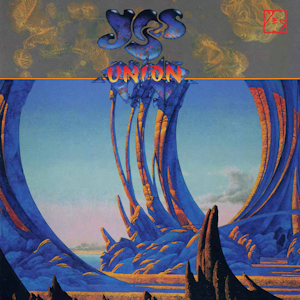
Union is the thirteenth studio album by English progressive rock band Yes, released on 30 April 1991 by Arista Records. Production began following the amalgamation of two bands that featured previous and then-current members of Yes: Anderson Bruford Wakeman Howe (ABWH), consisting of vocalist Jon Anderson, drummer Bill Bruford, keyboardist Rick Wakeman and guitarist Steve Howe, and Yes, at that time comprising bassist and vocalist Chris Squire, guitarist and vocalist Trevor Rabin, keyboardist Tony Kaye and drummer Alan White. The eight musicians signed with Arista and a combination of unfinished tracks by both groups were selected for Union. The album's sessions were problematic from the start, including disagreements between some of the musicians regarding the "merger" of the two bands, strained relations during the recording process, and decisions by the production team of Anderson and producer Jonathan Elias to bring in session musicians to re-record parts that Wakeman and Howe had originally completed.
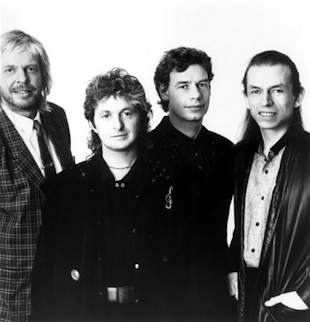
Anderson Bruford Wakeman Howe (ABWH) were an English progressive rock band active from 1988 to 1990 that comprised four past members of the English progressive rock band Yes. Singer Jon Anderson left Yes as he felt increasingly constrained by their commercial and pop-oriented direction in the 1980s. He began an album with other members from the band's 1970s era: guitarist Steve Howe, keyboardist Rick Wakeman, and drummer Bill Bruford, plus bassist Tony Levin.
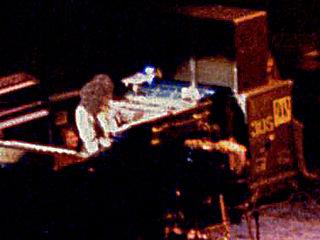
Patrick Philippe Moraz is a Swiss musician, film composer and songwriter, best known for his tenures as keyboardist in the rock bands Yes and the Moody Blues.

Going for the One is the eighth studio album by English progressive rock band Yes, released on 15 July 1977 by Atlantic Records. After taking a break in activity in 1975 for each member to release a solo album, and their 1976 tour of the United States and Canada, the band relocated to Montreux, Switzerland to record their next studio album. During rehearsals, keyboardist Patrick Moraz left the group, which marked the return of Rick Wakeman who had left to pursue a solo career after differences surrounding Tales from Topographic Oceans (1973). In a departure from their previous albums, Going for the One, with the exception of the fifteen-minute "Awaken", features shorter and more direct songs without an overarching concept, and saw Yes record with new engineering personnel and cover artists.
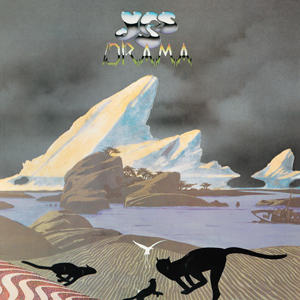
Drama is the tenth studio album by the English progressive rock band Yes, released on 22 August 1980 by Atlantic Records. It was their only album to feature Trevor Horn on lead vocals and the first with Geoff Downes on keyboards. This followed the departures of Jon Anderson and Rick Wakeman after attempts to record a new album in Paris and London had failed. Drama was recorded hurriedly with Horn and Downes, as a tour had already been booked before the change in personnel. The album marked a development in Yes' musical direction, combining the band's progressive signature with Horn and Downes' new wave sensibilities.

Tormato is the ninth studio album by English progressive rock band Yes. It was released on 22 September 1978 on Atlantic Records, and is their last album with singer Jon Anderson and keyboardist Rick Wakeman before their departure from the group in 1980. After touring their previous album Going for the One (1977), the band entered rehearsals in London to record a follow-up. The album was affected by various problems, such as internal disputes over the direction of the music and artwork, and the departure of engineer Eddy Offord early into the sessions, resulting in the group producing the album themselves.

Yesshows is the second live album by the English progressive rock band Yes. It was released in November 1980 on Atlantic Records as the final album before the group disbanded in early 1981. Their first live album in seven years, it is compiled of recordings from their 1976, 1977, and 1978 tours from dates in North America and Europe with its mixing supervised by bassist Chris Squire.
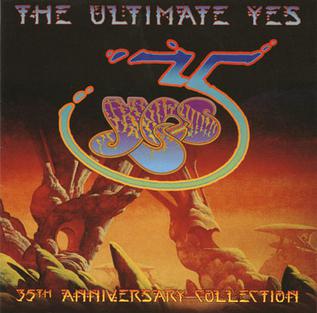
The Ultimate Yes: 35th Anniversary Collection is a compilation album by the English progressive rock band Yes. It was originally released on 2 CDs on 28 July 2003 by Warner Music in the United Kingdom. A 3 CD edition with additional material, including new recordings from October 2003, was released in the US on 27 January 2004 by Rhino Records.

This is a discography of the English progressive rock band Yes. Over the course of their career they have released 23 studio albums, 18 live albums, 15 compilation albums, 44 singles, and 23 videos.

"Roundabout" is a song by the English progressive rock band Yes from their fourth studio album Fragile, released in November 1971. It was written by singer Jon Anderson and guitarist Steve Howe and produced by the band and Eddy Offord. The song originated when the band were on tour and travelled from Aberdeen to Glasgow, and went through many roundabouts on the way.

Live at Montreux 2003 is a 2007 live album and video from the English progressive rock band Yes. It is a live recording of the group's headlining concert at the Montreux Jazz Festival on 14 July 2003. The performance was filmed and is also available on DVD/Blu-ray.

"Lift Me Up" is a song by the progressive rock band Yes. It was the first single released from their 1991 album Union. It reached the number-one spot on the Billboard Album Rock Tracks chart in May 1991, and stayed in this position for six weeks. It also charted on the Billboard Hot 100, their last single to do so.

"Don't Kill the Whale" is a song by the band Yes, released as a single from their 1978 album Tormato. It reached number 36 on the UK Singles Chart.

